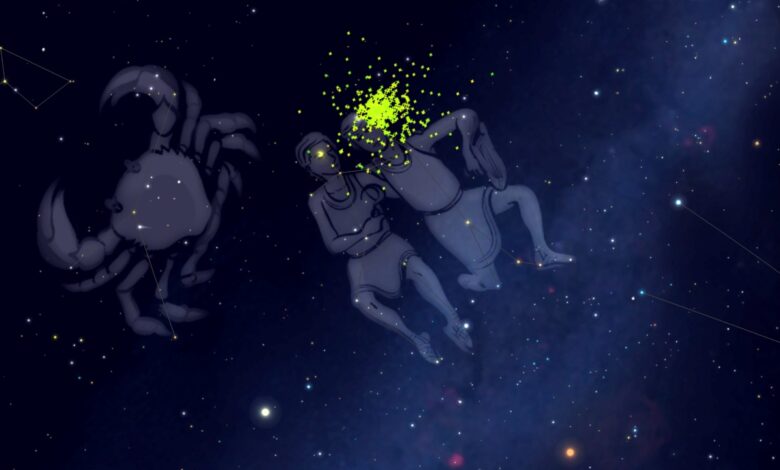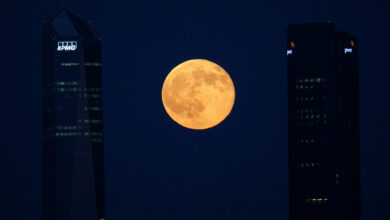Geminid meteor shower: What to know

Sky-gazers around most of the world will be able to glimpse the Geminid meteor shower this week.
The Geminids, which appear to radiate from a point in the constellation Gemini, are currently active until Dec. 17 and peaked Tuesday morning, according to NASA.
NASA TO CRASH SPACECRAFT INTO ASTEROID TO TEST PLANETARY DEFENSE: WHAT TO KNOW
Caused by debris from 3200 Phaethon – which astronomers have argued to be both an extinct comet and an asteroid – the Geminids are denser than other meteors in other showers.
The density enables the Geminids to get as low as 29 miles above Earth’s surface before burning up.
This shower is best viewed by observers in the Northern Hemisphere; the farther one goes toward the South Pole, the lower the Geminid radiant gets above the horizon.
Additionally, the moon was almost 80% full at the peak of the Geminids, impacting viewing by washing out fainter meteors.
FIREBALL BLAZES ACROSS TEXAS SKY
The Geminids travel 78,000 mph, or 40 times faster than a speeding bullet.
Meteors appear all over the sky, with a predicted rate of closer to 30-40 meteors per hour at its peak in the Northern Hemisphere.
“Rich in green-colored fireballs, the Geminids are the only shower I will brave cold December nights to see,” Bill Cooke, lead for NASA’s Meteoroid Environment Office, said in a statement.
For best viewing – although meteor rates will be much lower – observers should stay away from light pollution and lie on their back in the darkness, allowing time for eyes to adjust. This can take around 30 minutes.
CLICK HERE TO GET THE FOX NEWS APP
Looking at any screen will also ruin their night vision.
Source link




